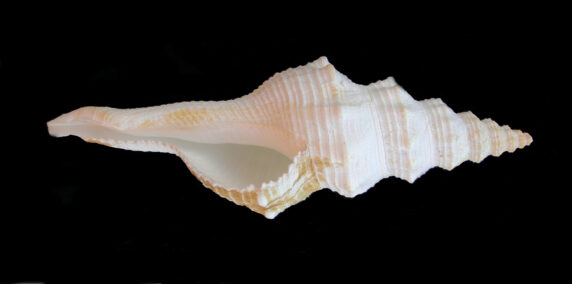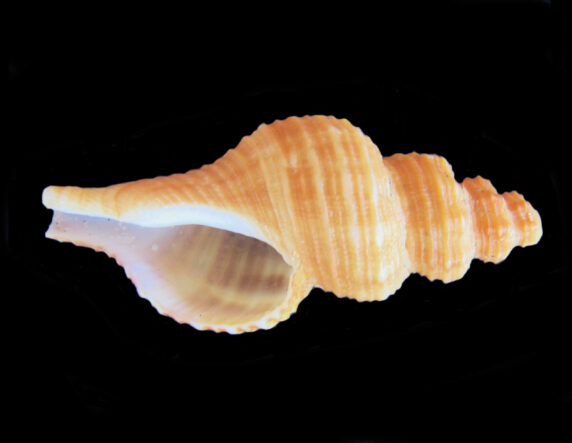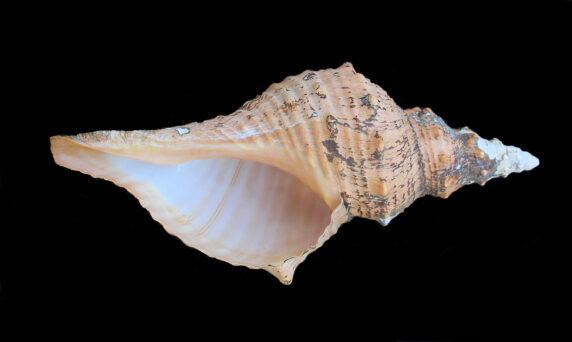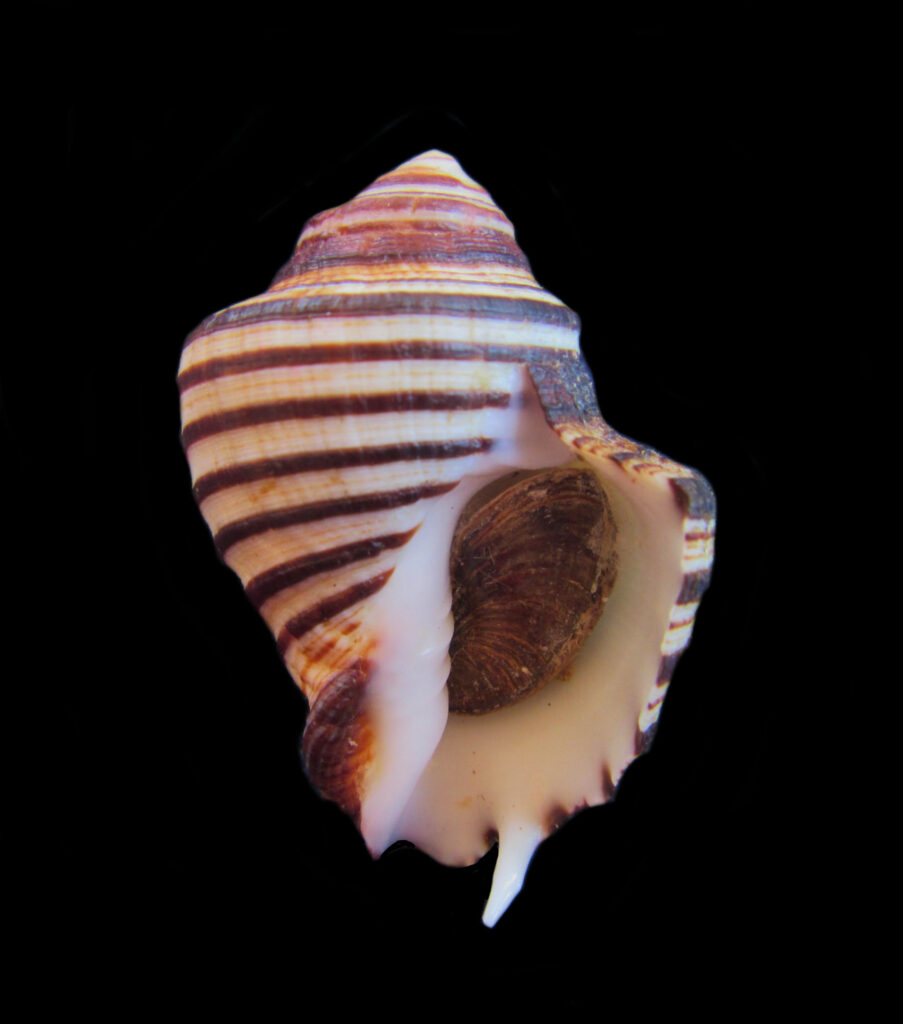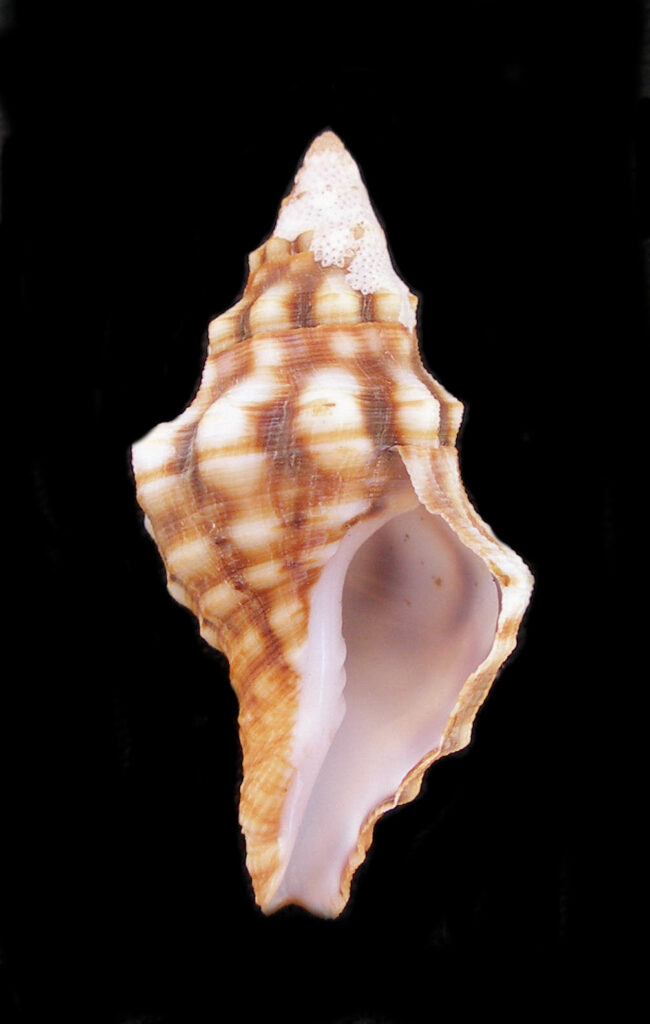Horse Conchs, Spindles and Tulip Shells of the Fasciolaridae Family
Six Horse Conchs, Spinple Conchs and Tulip Shells of the Fasciolaridae Family can be found in this website:
Horse Conches, Spindles, and Tulip Shells of the Fasciolaridae Family are fairly diverse in appearance. They are medium to large in size, vary from teardrop-shaped to diamond-shaped in profile, most are elongated with high spires, the siphonal canals vary from short to very long and the apertures can be small to large and may have outer lips that are smooth or marked with fine teeth and inside lips that are smooth or folded. The exterior sculpting maybe smooth or consist of length-wise ridges, spiral ribs or nodules. Most shells in this Family will have a periostracum and all shells have a corneous (horn-like material) operculum.
As a general rule, the shorter shells in the Fasciolaridae Family are found attached to rock or coral in the intertidal zone at depths up to 3,600 m (11,800 feet). Species with long siphon canals are found in deeper water environments over and within sand substrate. The Fasciolaridae are predators that consume barnacles, bivalves, gastropods, or worms. In turn they are preyed upon by sea stars, shore birds, crabs, fish, crabs, predatory mollusks and sea stars. The members of the Fasciolaridae Family are found world-wide, in tropical and temperate waters. The Fasciolaridae Family has between 550 and 600 individual species of which fifteen are found in the coastal waters of the Baja.
